Hearing aids have come a long way in recent years. These small devices can make a big difference for people with hearing loss.
New hearing aids use smart technology to improve sound quality and make life easier.
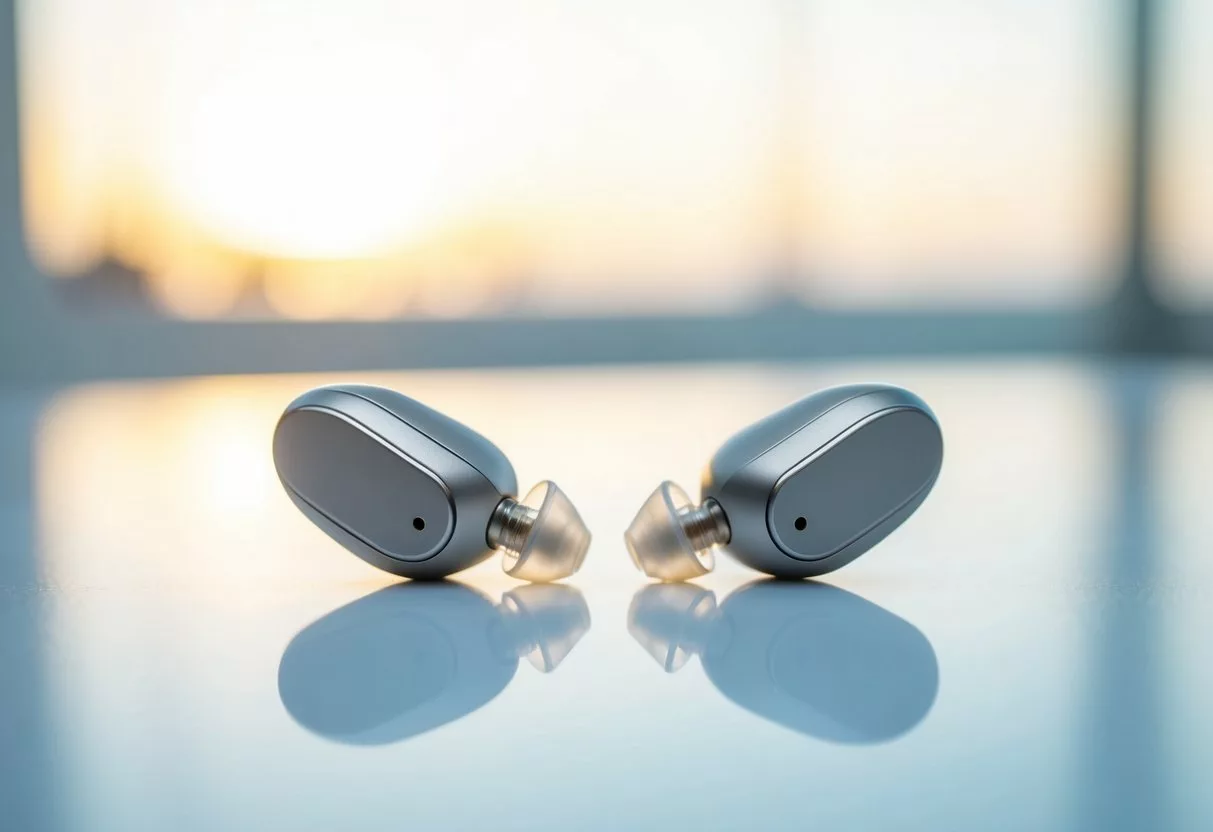
Today’s advanced hearing aids offer features like Bluetooth connectivity, rechargeable batteries, and smartphone apps for easy adjustments. Some can even translate languages or stream music directly to your ears.
The latest models are smaller and more discreet than ever before.
Choosing the right hearing aid depends on a person’s needs and lifestyle. Prices for hearing aids[1] range from about $800 to over $3,000 per pair.
Both over-the-counter and prescription options are now available. With so many choices, people with hearing loss have more ways to improve their hearing and quality of life.
Understanding Hearing Loss
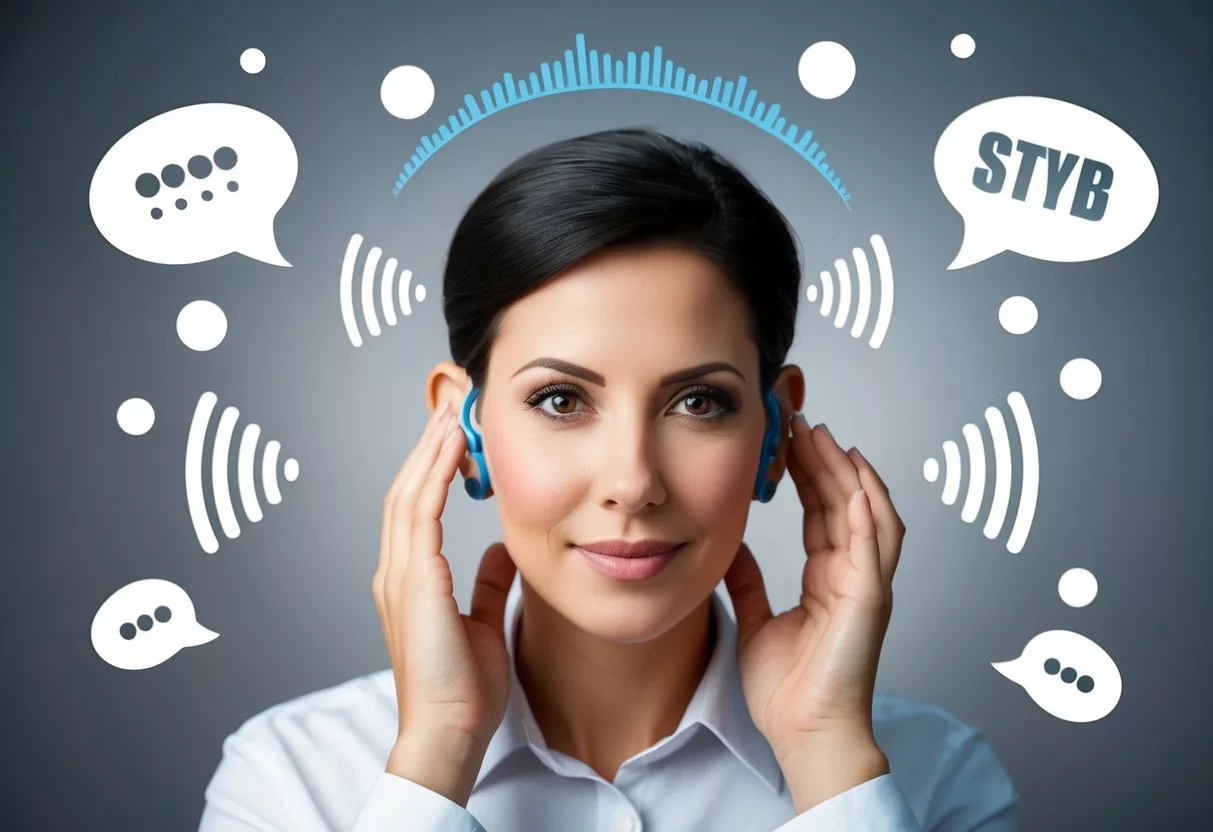
Hearing loss affects millions of people and can range from mild to profound. It impacts communication and daily life in various ways.
Degrees of Hearing Loss
Hearing loss is measured in decibels (dB) and classified into different levels.
Mild hearing loss[2] ranges from 26 to 40 dB, making soft sounds hard to hear.
Moderate hearing loss falls between 41 to 55 dB, causing difficulty in normal conversations.
Severe hearing loss (71 to 90 dB) makes loud sounds seem faint. People with this level often rely on lip-reading and hearing aids.
Profound hearing loss is anything above 91 dB. Those affected may not hear even very loud noises without powerful hearing devices.
An audiologist or hearing specialist can test and diagnose the exact level of hearing loss. They use specialized equipment to map a person’s hearing ability across different sound frequencies.
Impact on Communication and Lifestyle
Hearing loss can greatly affect daily life. People may struggle to follow conversations, especially in noisy places. This can lead to social isolation and reduced participation in activities.
Work performance might suffer due to communication challenges. Safety can be a concern, as important sounds like alarms or car horns may go unnoticed.
Hearing aids can help[3] many people with hearing loss. Modern devices offer features tailored to different levels of hearing loss and lifestyle needs. Regular hearing checks and early intervention can prevent many negative impacts of hearing loss on quality of life.
The Evolution of Hearing Aids
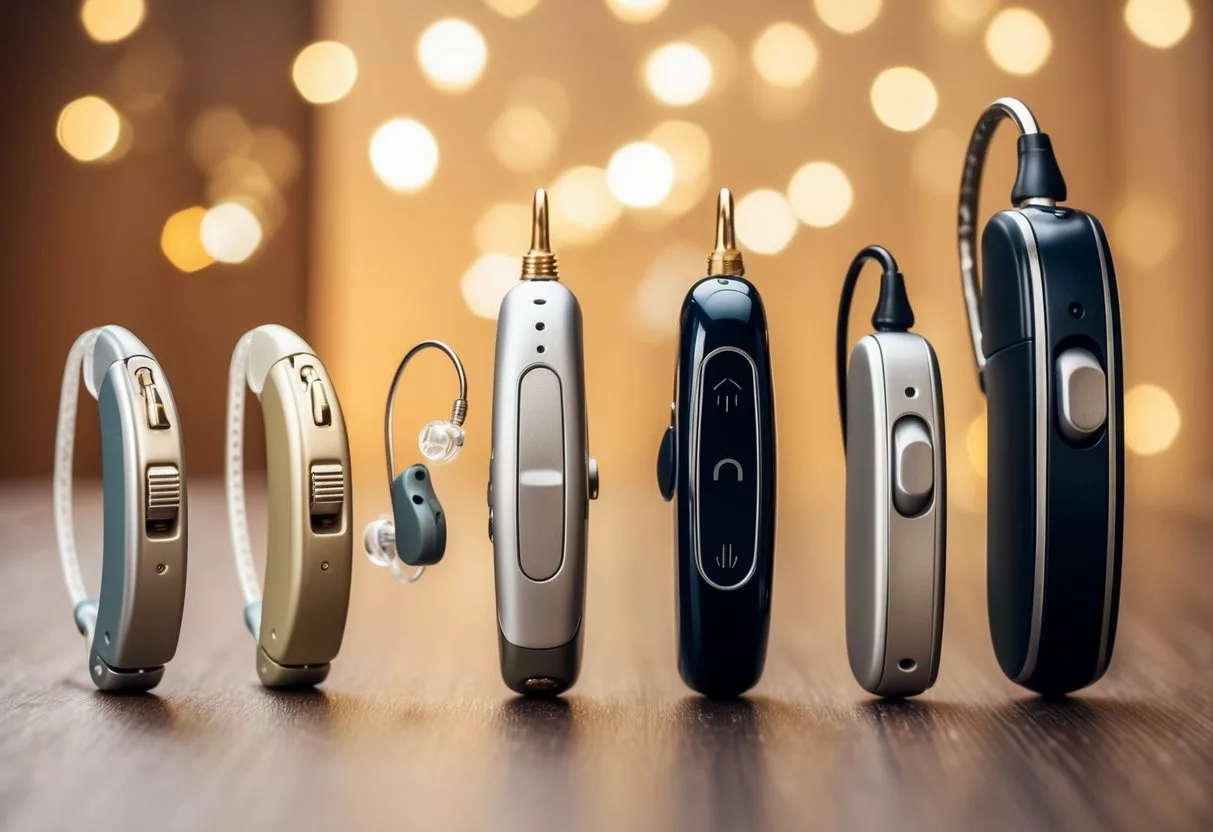
Hearing aids have come a long way since their early beginnings. These devices have transformed from simple amplifiers to sophisticated digital systems that enhance the lives of millions.
Historical Milestones
Ear trumpets[4] were the first hearing aids, used in the 17th century. These basic devices helped focus sound into the ear canal.
The late 19th century saw the invention of electronic hearing aids. These used carbon microphones and batteries to amplify sound.
In the 1920s, vacuum tube technology improved hearing aid performance. However, these devices were still large and not very portable.
Transistor hearing aids arrived in the 1950s. They were smaller and more efficient, marking a significant leap forward in hearing aid design.
Modern Technological Advancements
Digital hearing aids[5] emerged in the 1990s. They convert sound waves into digital signals, allowing for precise sound processing.
Today’s hearing aids use advanced features like:
- Noise reduction
- Feedback cancellation
- Directional microphones
- Bluetooth connectivity
Artificial intelligence[6] is now being integrated into hearing aids. This technology helps devices adapt to different environments automatically.
Many hearing aid brands offer various technology levels to suit different needs and budgets. These range from basic amplification to premium models with advanced features.
Types of Hearing Aids
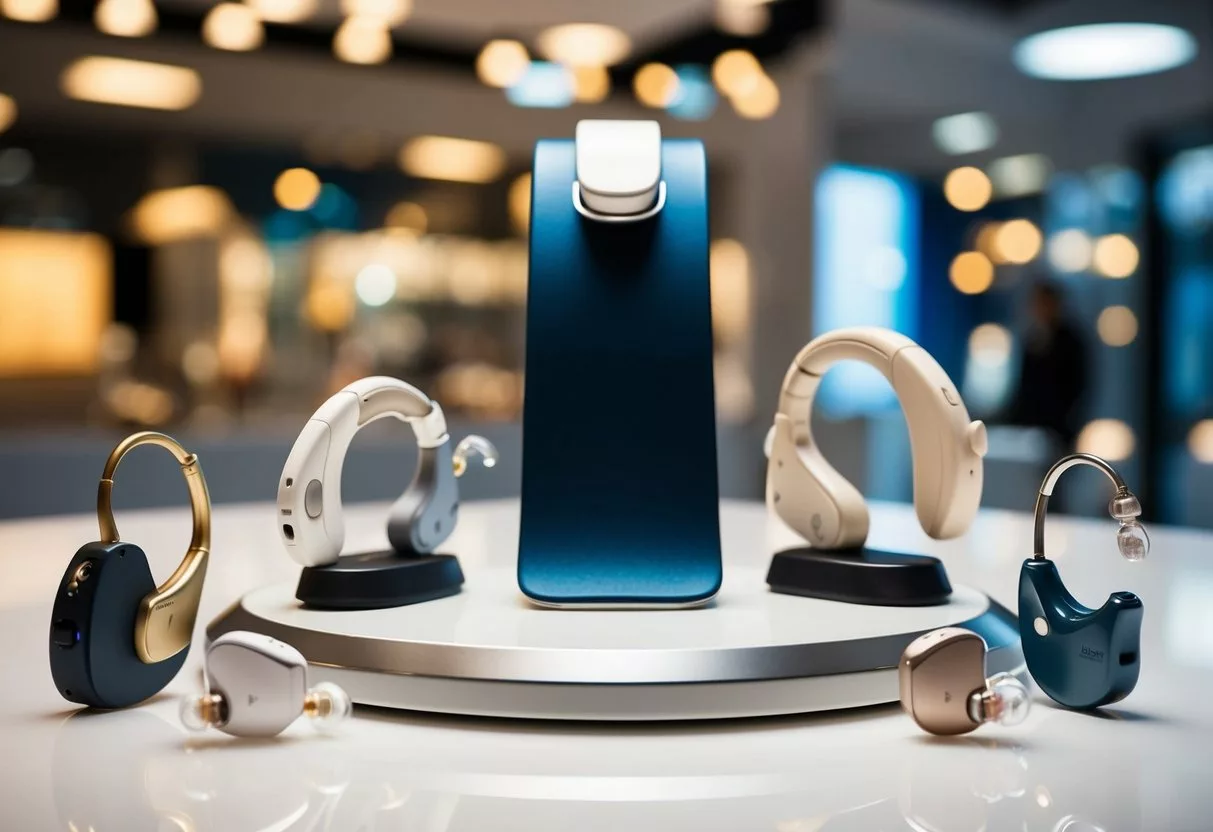
Hearing aids come in different styles to suit various needs and preferences. Each type has unique features, benefits, and drawbacks. The main types are behind-the-ear, in-the-ear, in-the-canal, and completely-in-canal devices.
Behind-the-Ear (BTE)
Behind-the-ear hearing aids[2] sit behind or on top of the outer ear. They connect to an earpiece inside the ear canal with a thin tube. BTE aids are suitable for people of all ages and can help with most types of hearing loss.
These devices are easy to handle and clean. They often have more features and stronger amplification than smaller aids. BTE aids can accommodate larger batteries, which may last longer.
Some people find BTE aids more visible than other types. But newer models are smaller and less noticeable. Many come in different colors to blend with hair or skin tone.
In-the-Ear (ITE)
In-the-ear hearing aids[7] fit completely inside the outer ear. They are custom-made to fit the shape of a person’s ear. ITE aids are suitable for mild to severe hearing loss.
These devices are easier to insert than smaller in-canal aids. They often include features like volume control and directional microphones. The larger size allows for easier handling.
ITE aids are more visible than smaller in-canal types. But they offer a balance between visibility and functionality. They may pick up wind noise more than BTE aids.
In-the-Canal (ITC)
In-the-canal hearing aids fit partly in the ear canal. They are less visible than ITE aids but more visible than completely-in-canal devices. ITC aids work well for mild to moderate hearing loss.
These aids are custom-fitted to the ear canal shape. They often include features like directional microphones and volume controls. The smaller size can make them harder to adjust than larger aids.
ITC devices may be prone to earwax clogging. They typically use smaller batteries, which may need to be changed more often. Some users find them more comfortable than larger aids.
Completely-in-Canal (CIC)
Completely-in-canal hearing aids[7] are the smallest and least visible type. They fit deep inside the ear canal, making them nearly invisible. CIC aids are best for mild to moderate hearing loss.
These devices offer excellent sound quality due to their position in the ear. They are less likely to pick up wind noise than larger aids. Many users find them comfortable and natural-sounding.
CIC aids have very small batteries, which need frequent changing. They typically lack advanced features due to their size. Some users may find them difficult to insert and remove.
Design and Comfort
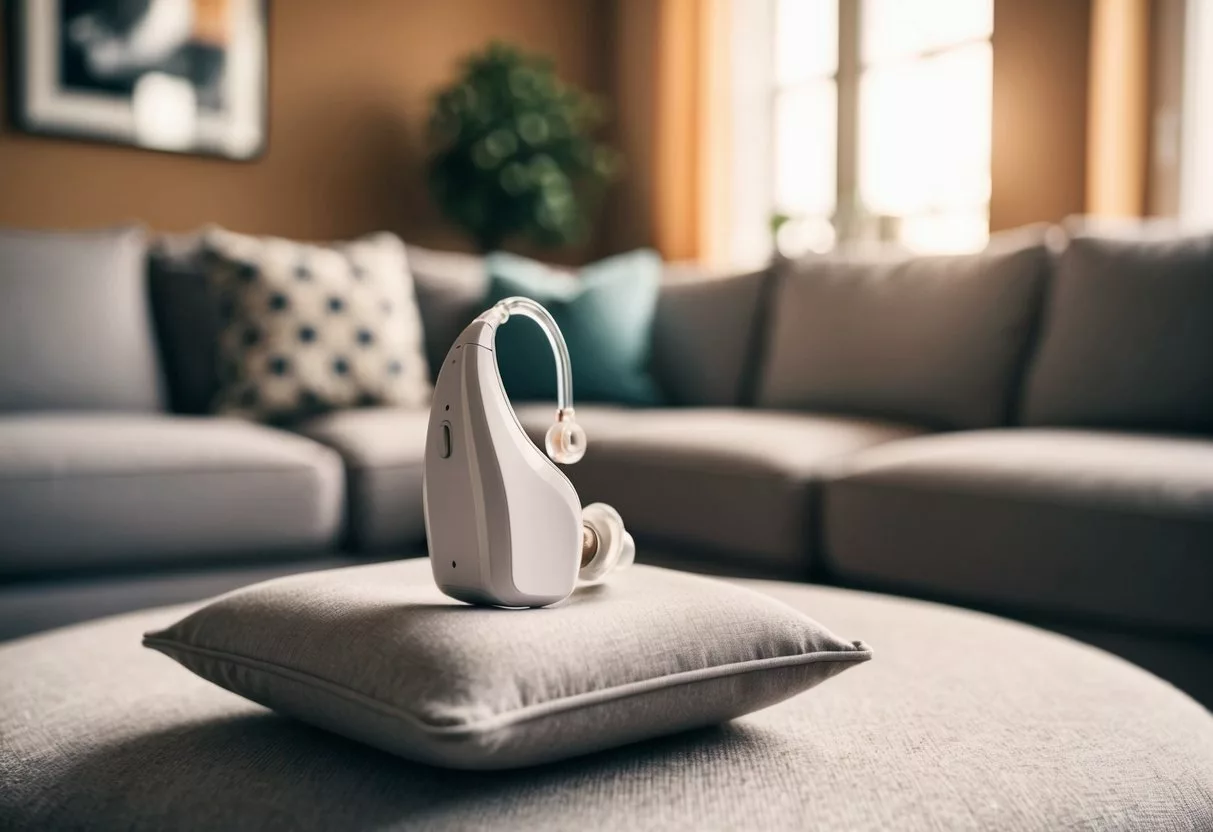
New hearing aids focus on user comfort and style. These devices blend advanced technology with ergonomic designs to meet users’ needs.
Custom Fitting
Hearing aids now offer personalized fits[8] for each user. Audiologists use 3D scanning to create molds that match ear shapes perfectly. This ensures a snug, comfortable fit all day long.
Some brands provide different dome sizes for behind-the-ear models. Users can choose the size that feels best. Custom-molded in-the-ear aids sit flush within the ear canal.
Invisible hearing aids[9] are tiny and fit deep in the ear canal. They’re hard to spot, making them ideal for those who want discretion.
Ergonomic Design
Modern hearing aids put a strong focus on user comfort. Manufacturers use lightweight materials to reduce strain on the ears. Smooth edges prevent irritation against skin.
Many devices now have water-resistant coatings[8]. This protects against sweat and light rain. Some are fully waterproof for active lifestyles.
Button placement is carefully considered for easy adjustments. Large, tactile controls help users with dexterity issues. Some aids offer touch controls for quick setting changes.
Rechargeable models eliminate the need for tiny batteries. This makes them easier to handle and maintain.
Hearing Aid Features
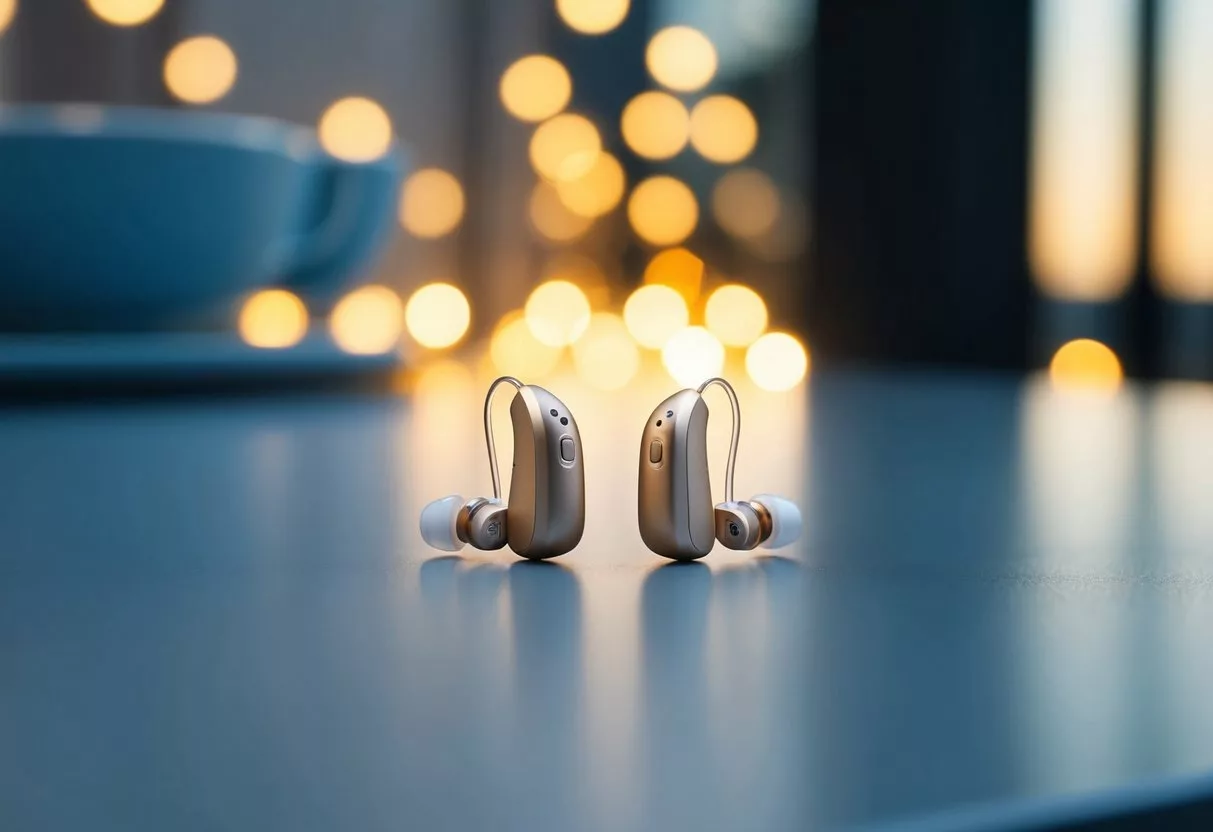
Modern hearing aids come with a variety of advanced features to improve sound quality and user experience. These features enhance listening in different environments, reduce unwanted noise, and offer convenient connectivity and power options.
Amplification and Sound Quality
Hearing aids use sophisticated amplification technology to boost sound levels. They adjust volume based on the user’s specific hearing loss pattern.
Many devices now use digital signal processing to enhance clarity and reduce distortion.
Advanced models offer features like frequency compression. This shifts high-frequency sounds to lower ranges that are easier for some users to hear. Some hearing aids also use directional microphones. These focus on sounds coming from in front of the user while reducing noise from other directions.
Sound quality has improved greatly in recent years. High-end devices can process sound up to 48,000 times per second. This results in more natural, clearer audio across a wide range of frequencies.
Noise Reduction Capabilities
Background noise can make conversations difficult for hearing aid users. Modern devices use complex algorithms to identify and reduce unwanted noise.
Some high-end models can reduce background noise[2] by up to 20 decibels.
Many hearing aids now offer multiple programs for different listening environments. These might include settings for quiet rooms, noisy restaurants, or outdoor spaces. Some devices can automatically switch between these programs based on the detected sound environment.
Wind noise reduction is another important feature. This helps users enjoy outdoor activities without constant rushing sounds in their ears. Advanced models can reduce wind noise by up to 26 decibels.
Connectivity Options
Bluetooth connectivity has become a standard feature in many hearing aids. This allows users to stream audio directly from smartphones, TVs, and other devices. Some models can connect to two Bluetooth devices at once for added flexibility.
Many hearing aids now come with companion smartphone apps. These apps let users adjust volume, change programs, and even locate lost devices. Some apps also offer features like remote fine-tuning by an audiologist.
Telecoil technology is still available in many hearing aids. This allows users to connect to loop systems in public spaces like theaters or churches for improved sound quality.
Battery Solutions
Battery life is a key concern for hearing aid users. Many modern devices now offer rechargeable batteries[9].
These can last up to 30 hours on a single charge. Some models come with portable charging cases for on-the-go power.
Wireless charging is available in some high-end models. Users simply place their hearing aids on a charging pad overnight. This eliminates the need to handle small batteries or charging ports.
For those who prefer disposable batteries, many hearing aids still offer this option. Zinc-air batteries are common and can last 3-10 days depending on usage. Some devices have low-battery alerts to remind users when it’s time for a change.
Advanced Technologies
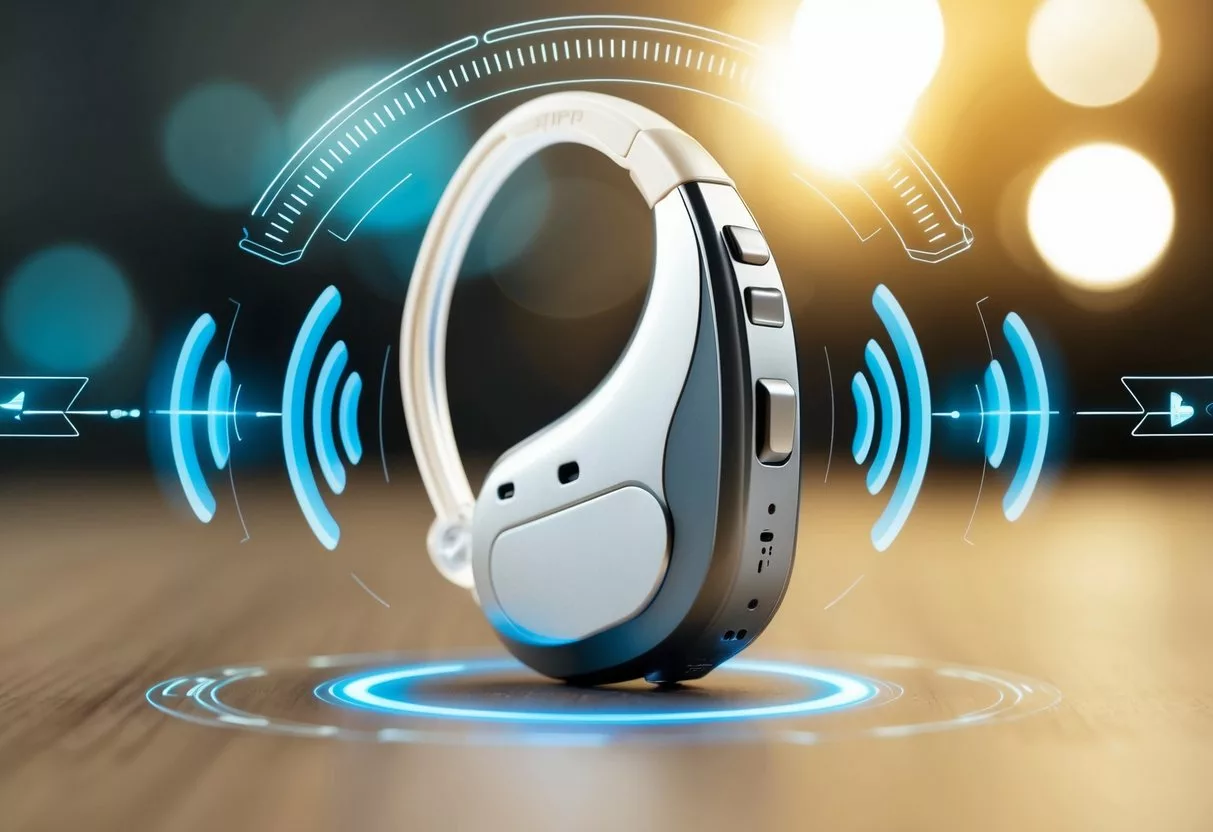
Modern hearing aids use cutting-edge tech to help people hear better. These devices now offer more features than ever before.
Customization and Programming
Advanced hearing aids[10] can be tailored to each person’s needs. Audiologists use special software to adjust settings. This makes sure the aids work best for each user’s hearing loss.
Some aids use artificial intelligence to learn user preferences. They can change settings based on the environment. For example, they might lower background noise in a busy restaurant.
Many newer models have multiple programs. Users can switch between them for different listening situations. This gives more control over how the aids perform in various settings.
Smartphone Integration
New hearing aids often connect to smartphones. This opens up many helpful features for users.
With a smartphone app, people can adjust volume and settings. They can also check battery life and find lost hearing aids.
Some apps even let users stream audio directly to their hearing aids. This works for phone calls, music, and videos.
Bluetooth compatibility[1] is common in modern aids. It allows for easy connection to various devices.
Tinnitus Support
Many advanced hearing aids now offer tinnitus relief[11] features. Tinnitus is a ringing or buzzing sound in the ears.
These aids use sound therapy to help mask tinnitus. They can play soft sounds like white noise or nature sounds. This can make the tinnitus less noticeable.
Some devices have special tinnitus programs. Users can pick different sounds or adjust the volume. This helps them find the most effective relief.
Advanced signal processing in these aids can also help. It can make speech clearer and reduce background noise. This may help users focus less on their tinnitus.
Choosing the Right Hearing Aid
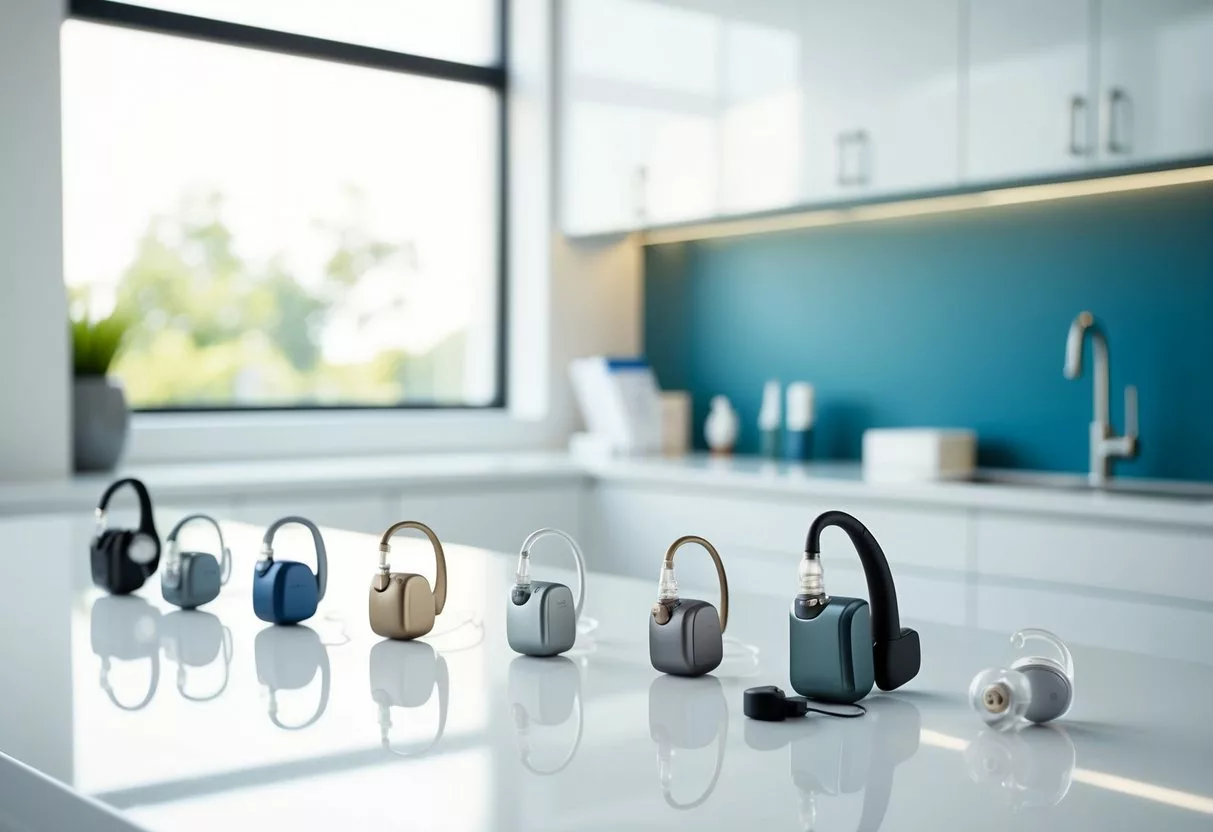
Selecting a hearing aid involves careful consideration of personal needs, professional advice, and financial factors. The right choice can greatly improve quality of life and communication abilities.
Audiologist Consultation
An audiologist plays a key role in finding the best hearing aid. They conduct thorough hearing tests to determine the type and degree of hearing loss. These professionals can recommend specific hearing aid styles[2] like behind-the-ear (BTE) or in-the-ear (ITE) models.
Audiologists also help with fitting and adjusting hearing aids. They ensure the devices work properly and provide the right level of amplification. Regular follow-up appointments allow for fine-tuning and addressing any issues that arise.
Considering Lifestyle Needs
Lifestyle factors greatly influence hearing aid selection. Active individuals might prefer water-resistant models for outdoor activities. Those who frequently use phones may benefit from hearing aids with Bluetooth connectivity.
Some key features to consider:
- Battery life
- Directional microphones
- Noise reduction technology
- Telecoil for use with loop systems
Modern hearing aids[12] often include advanced technology like automatic sound adjustments and artificial intelligence. These features can adapt to different environments, enhancing the user’s experience.
Evaluating Cost and Financing
Hearing aid prices vary widely, ranging from $200 to $7,000[7]. Budget constraints are a reality for many, but it’s important to balance cost with quality and features.
Some financing options include:
- Health insurance (check coverage details)
- Medicare Advantage plans
- Flexible spending accounts (FSAs)
- Payment plans offered by hearing aid providers
While premium packages offer advanced features, they may not be necessary for everyone. Users should discuss their budget with their audiologist to find a solution that meets both their hearing needs and financial situation.
Hearing Aid Brands and Models
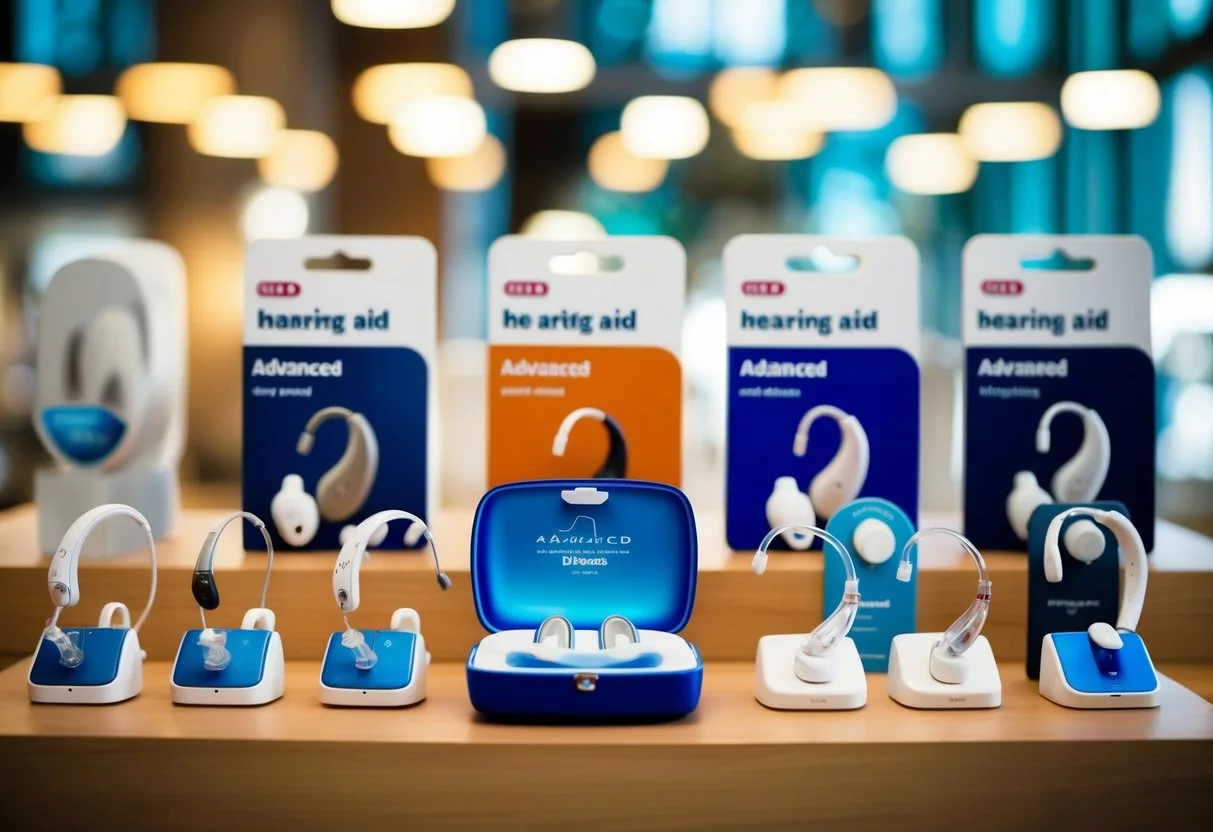
The hearing aid market offers many options from top brands. These include advanced models with cutting-edge features and more affordable choices for different needs and budgets.
Leading Brands in 2024
Oticon, Phonak, and Starkey[9] are among the top hearing aid manufacturers in 2024. Oticon’s Real model uses artificial intelligence to improve sound processing. Phonak’s Audéo Lumity offers excellent sound quality and connectivity features.
Starkey’s Evolv AI provides edge AI processing for clearer sound. ReSound and Signia also make high-quality devices. The ReSound Omnia enhances speech understanding in noisy settings. Signia’s Styletto AX combines style with advanced technology.
Jabra and Sony[13] have entered the over-the-counter market. Jabra’s Enhance Select 300 is a popular choice. Sony’s CRE-E10 combines the company’s audio expertise with hearing aid technology.
Innovative Models to Consider
Eargo offers nearly invisible in-ear devices[9]. Their latest models, like the Eargo 7, feature advanced sound adjustment technology. The Eargo SE and LINK are more budget-friendly options.
Lexie’s B2 Plus provides customizable settings through a smartphone app. MDHearing aims to offer quality devices at lower prices. Their VOLT model includes noise reduction and feedback cancellation.
Audicus and Hear.com[14] provide online hearing tests and custom-programmed aids. Audicus offers models like the Wave 2 and Mini with various features to suit different needs. Hear.com partners with major brands to provide personalized solutions.
Over-the-Counter (OTC) vs Prescription Hearing Aids

OTC and prescription hearing aids differ in key ways. These differences impact how people access, use, and benefit from these devices.
Accessibility and Affordability
OTC hearing aids[15] are available without a prescription. People can buy them at drugstores, pharmacies, or online. This makes them easy to get.
OTC aids are often cheaper than prescription ones. Prices for OTC aids range from $200 to $1000. Prescription aids can cost $1000 to $6000 per pair.
But OTC aids are only for adults with mild to moderate hearing loss. People with severe hearing loss need prescription aids.
Efficacy and Personalization
Prescription hearing aids[16] offer more customization. An audiologist tests a person’s hearing and fits the aids. This process ensures the aids meet specific needs.
OTC aids are self-fitted. Users adjust them on their own. This can work well for some, but not all.
Prescription aids can treat all levels of hearing loss. They have more advanced features. These may include noise reduction and directional microphones.
OTC aids have fewer features. But they can still help many people hear better. Some OTC aids allow app-based adjustments for a more tailored fit.
Support and Services
Good hearing aid support includes customer service, remote help, and repair options. These services keep devices working well and users happy.
Customer Service Standards
Hearing aid companies offer different types of customer support. Many have phone lines staffed by trained experts. These reps can answer questions about device use and troubleshooting. Some brands provide online chat for quick help.
Top companies have audiologists on staff[2] to give specialized advice. They can help with fitting issues and programming adjustments. Some offer in-person appointments at local offices.
Response times vary between brands. The best aim to answer calls within minutes. Email responses may take 1-2 business days. Many companies have extended hours to serve all time zones.
Remote Support and Maintenance
Modern hearing aids often allow remote adjustments. This saves trips to the audiologist.
Users can connect their devices to smartphones or computers. Then, professionals can fine-tune settings from afar.
Some brands offer video calls for visual aid. An expert can guide users through cleaning or battery changes. This helps solve problems quickly without in-person visits.
Remote support[9] may include software updates. These can add new features or fix bugs. Many devices download updates automatically when connected to the internet.
Warranties and Repairs
Most hearing aids come with a warranty. These often cover defects and normal wear for 1-3 years. Some premium models offer longer coverage[14], up to 4 or 5 years.
Warranties usually include free repairs. Users can send devices to the manufacturer for fixing. Some brands offer loaner aids during repair times.
Many warranties cover loss or damage. They may replace lost aids once or twice during the coverage period. Water damage is sometimes included, but not always.
Extended warranties are often available for purchase. These add extra years of coverage beyond the standard term. Prices vary based on the model and length of extension.
Frequently Asked Questions
Advanced hearing aids offer cutting-edge features and technologies to improve hearing quality. Consumers have many options to choose from, with various models suited for different needs and budgets. Here are some key questions about advanced hearing aids:
What features do the top hearing aid brands offer?
Leading hearing aid brands provide features like noise reduction[17], directional microphones, and smartphone connectivity. Many models offer rechargeable batteries and customizable sound settings.
Some advanced hearing aids include artificial intelligence to automatically adjust to different listening environments. Bluetooth connectivity allows users to stream audio directly from phones and other devices.
How do the latest hearing aid technologies improve hearing quality?
New technologies significantly enhance sound clarity and speech understanding. Advanced digital signal processing helps filter out background noise and focuses on voices.
Some hearing aids use machine learning to learn user preferences over time. This allows them to automatically adjust settings based on the wearer’s typical environments and listening needs.
What should consumers look for when seeking affordable yet advanced hearing aids?
Consumers should consider rechargeable models[18] to save on battery costs. Looking for hearing aids with basic but effective features can provide good value.
Some manufacturers offer entry-level models with advanced technology at more affordable price points. Comparing warranties and included services can also help find the best overall value.
Which hearing aid models are recognized for best performance by consumer reports?
Top-rated models often come from major brands like Phonak, Oticon, and ReSound. These typically score well for sound quality, comfort, and battery life.
Some newer over-the-counter options like Jabra Enhance Select[11] have also received positive reviews for performance and value. Consumer reports often highlight models with user-friendly features and reliability.
How does one choose the most appropriate hearing aid for severe hearing loss?
For severe hearing loss, behind-the-ear (BTE) models[2] are often recommended. These provide more power and can accommodate larger batteries.
Working with an audiologist is crucial to find the right fit. They can program advanced features to address specific hearing challenges and ensure maximum benefit.
What are the most common issues reported with advanced hearing aids?
Users sometimes report difficulties adjusting to new sounds or managing complex settings.
Battery life can be a concern, especially with feature-rich models.
Feedback or whistling noises can occur if the fit isn’t perfect.
Some users find smartphone connectivity challenging to set up or use consistently.
References
- Best Hearing Aids Of 2025, According To Experts – Forbes Health. https://www.forbes.com/health/hearing-aids/best-hearing-aids/ Accessed October 23, 2025
- Hearing aids: How to choose the right one. https://www.mayoclinic.org/diseases-conditions/hearing-loss/in-depth/hearing-aids/art-20044116 Accessed October 23, 2025
- Best Hearing Aids Of 2025, According To Experts – Forbes Health. https://www.forbes.com/health/hearing-aids/best-hearing-aids-for-profound-hearing-loss/ Accessed October 23, 2025
- A Journey Through Sound: The Evolution of the Hearing Aid. https://historyofyesterday.com/a-journey-through-sound-the-evolution-of-the-hearing-aid/ Accessed October 23, 2025
- Hearing Aid Evolution: A Look at Today’s Most Advanced Hearing Aid Technology. https://hearingloss.com/hearing-loss-resources/hearing-aid-evolution-a-look-at-todays-most-advanced-hearing-aid-technology Accessed October 23, 2025
- Just a moment.... https://hearinghealthmatters.org/hearing-aids/2024/hearing-aids-ai/ Accessed October 23, 2025
- NCOA Adviser. https://www.ncoa.org/adviser/hearing-aids/hearing-aid-types-styles/ Accessed October 23, 2025
- Phonak Sphere Infinio from a Best Practices Audiologist. https://hearingup.com/hearing-aids/phonak-sphere-infinio Accessed October 23, 2025
- NCOA Adviser. https://www.ncoa.org/adviser/hearing-aids/best-hearing-aids/ Accessed October 23, 2025
- Advanced Hearing Aid Technology. https://audiologyoncall.com/advanced-hearing-aid-technology/ Accessed October 23, 2025
- The 12 Best Hearing Aids Reviewed (2025). https://audiologists.org/product-reviews/best-hearing-aids Accessed October 23, 2025
- How to Choose a Hearing Aid, According to Audiologists. https://audiologists.org/resources/hearing-wellness/how-to-choose-a-hearing-aid Accessed October 23, 2025
- 8 Best Hearing Aids of 2024: Models From Top Rated Brands. https://www.usnews.com/360-reviews/services/hearing-aids/best-hearing-aids Accessed October 23, 2025
- 404. https://www.helpguide.org/handbook/hearing-aids/best-hearing-aids Accessed October 23, 2025
- Over-the-Counter vs. Prescription Hearing Aids. https://www.aarp.org/health/conditions-treatments/info-2022/over-the-counter-hearing-aid-facts.html Accessed October 23, 2025
- Hearing Aids: Our OTC vs. Prescription Picks. https://www.healthline.com/health/otc-vs-prescription-hearing-aids Accessed October 23, 2025
- Frequently Asked Questions About Hearing Aids. https://www.hopkinsmedicine.org/health/treatment-tests-and-therapies/frequently-asked-hearing-aid-questions Accessed October 23, 2025
- 10 Frequently Asked Questions about Hearing Aids – Advanced Affordable Hearing, LLC. https://advancedhearing.com/articles/10-frequently-asked-questions-about-hearing-aids Accessed October 23, 2025
